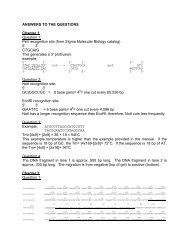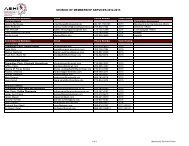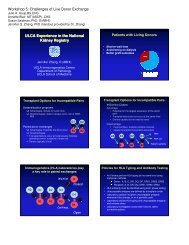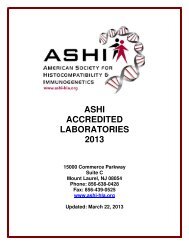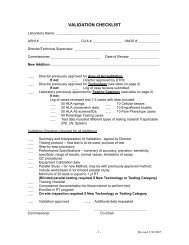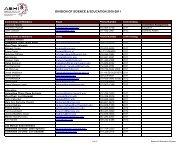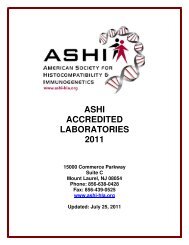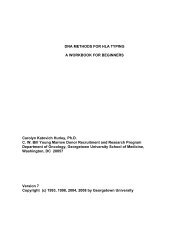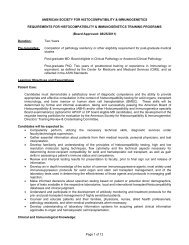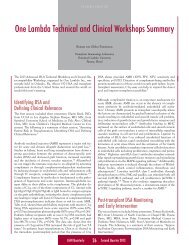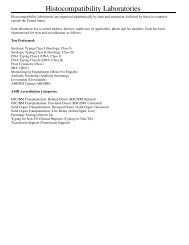Monday, September 27, 2010 2:00 PM - American Society for ...
Monday, September 27, 2010 2:00 PM - American Society for ...
Monday, September 27, 2010 2:00 PM - American Society for ...
- No tags were found...
Create successful ePaper yourself
Turn your PDF publications into a flip-book with our unique Google optimized e-Paper software.
only IS off, only nephrectomy, only transfusions, or none of the above, and 4 (16%) made Abs. I contrast,of 43 patients who had IS off plus nephrectomy and /or transfusions, 34 (79%) made Abs (p=10 -6 ). Thus, ISoff is a pre-requisite <strong>for</strong> sensitization, but it also requires nephectomy, transfusions, or both. 7/30 (23%)patients who did not undergo nephrectomy became sensitized, as did 12/31 (39%) patients who were nottransfused and 4/15 (<strong>27</strong>%) who were neither nephrectomized nor transfused. In contrast, none of 11patients who continued on IS with or without nephrectomy or transfusions became sensitized (p=0.025 vseither nephrectomy or transfusions with IS off).Conclusions: Thus, IS is a key factor in sensitization. This suggests the possibility of using IS, at Txmaintenance doses, in selected patients (such as be<strong>for</strong>e nephrectomy and/or transfusions) to avoid thegeneration of broad Ab reactivity.49-PCLINICAL RELEVANCE OF PRETRANSPLANT DONOR-SPECIFIC HLA ANTIBODIES INRENAL TRANSPLANTATION.Eun Young Song 1 , Yu-joo Lee 1 , Shin Young Joo 1 , Jung Won Hyun 1 , Yon Su Kim 2 , Jongwon Ha 3 , SangJoon Kim 3 , Myoung Hee Park 1 . 1 Laboratory Medicine, Seoul National University College of Medicine,Seoul, Korea; 2 Internal Medicine, Seoul National University College of Medicine, Seoul, Korea; 3 Surgery,Seoul National University College of Medicine, Seoul, Korea.Aim: This study was per<strong>for</strong>med to evaluate the clinical relevance of pretransplant donor-specific HLAantibodies (DSA) and their acceptable levels, <strong>for</strong> which still controversies exist.Methods: A total of 28 patients showing positive flow crossmatch (T and/or B) results at the time oftransplantation or historical peak sera were selected and retrospectively tested <strong>for</strong> the presence of class Iand/or class II DSA at the time of transplantation using Luminex single antigen assay (LIFECODES LSA,Tepnel Lifecodes). Twelve patients underwent pretransplant desensitization therapy and all of the 28patients had negative T cell CDC crossmatch at the time of transplantation. DSA levels were determined bysum of MFI values to donor-specific HLA antigens: class I, class II, and total (class I + II). Correlation ofthe DSA levels with occurrence of biopsy confirmed acute rejection (AR) and graft survival was evaluated.Results: Sixteen of 28 patients (57.1%) had DSA. The incidence of AR was significantly higher in patientswith DSA than in patients without DSA (56.3% [9/16] vs. 8.3% [1/12]; P=0.02), but three-year allograftsurvival was not different between the two groups. The total DSA levels were significantly higher inpatients with antibody-mediated rejection (AMR) than in patients without AMR (17,667 vs 3,417,P



